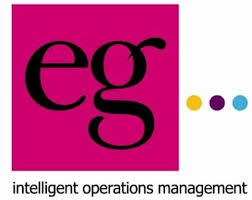 eg solutions: Digital disruption and the rise of challenger brands mean that the traditional banking sector needs to focus on delivering an exceptional customer experience to survive
eg solutions: Digital disruption and the rise of challenger brands mean that the traditional banking sector needs to focus on delivering an exceptional customer experience to survive
The rise of digitisation is disrupting even the most traditional of businesses – the banking sector. In particular the advent of the mobile device has dramatically accelerated the pace of change. This key point in the recently launched BBA/Accenture Report – Digital Disruption, UK Banking Report – is supported by the claim that it is only by having what it terms a ‘slick Back Office’, will the sector survive in its current form.
This view is endorsed by pioneer and pacesetter in enterprise back office workforce optimisation software, eg solutions, which believes that the UK retail banking sector needs to adapt to the evolution of the consumer, and that means being able to address and execute any and all requirements. This means a fundamental rethink in the traditional roles of front and back offices, a fact born out in the Report.
 Elizabeth Gooch, Chief Executive Officer, eg solutions, stated: “Digital disruption is not only changing the way we interact with banks, but the way they do with us. Contactless cards, faster payments and payment apps are dramatically transforming the role of the branch, and many are having to rethink the way they traditionally configure both the existing branch networks, their call centres, and back office operations,”
Elizabeth Gooch, Chief Executive Officer, eg solutions, stated: “Digital disruption is not only changing the way we interact with banks, but the way they do with us. Contactless cards, faster payments and payment apps are dramatically transforming the role of the branch, and many are having to rethink the way they traditionally configure both the existing branch networks, their call centres, and back office operations,”
“Consumers’ expectations have dramatically increased and they expect fast, seamless and efficient service, regardless of the method of interaction which is increasingly all at the touch of a button on a mobile device. And the banking sector needs to address this head on.”
Digital disruption is set to transform the banking sector for some time to come and according to the BBA/Accenture Banking Report this will come in the form of:
• Changing consumer behaviour which has made the way a bank interacts with its customer far more complex
• Increased competition from new entrants as well as technology disruptors such as Paypal
• Increased regulation that follows banking digitisation
• The complexity of legacy systems within banks acting as a brake on change
“It is the final point that stands out as it is this that lies at the heart of how a bank operates. Legacy systems are often ‘hard-wired’ into the enterprise and as such change is both more difficult and the biggest potential risk to the business. According to the BBA/Accenture Report this new digital world presents a host of new demands on those very same creaking legacy systems, central to which is the increased importance of the Back Office operation itself,” continued Elizabeth.
The Report details five core areas placing demands on legacy systems:
• Delivering what Accenture terms ‘slick back office systems to support a 24/7 world’
• Technology may not be ageing but the workforce that installed and maintained it are, and many are retiring
• New apps and market entrants are putting new pressures on banks for increased levels of user banking data
• Managing the cost pressures
• Ensuring that regulators are satisfied
“This legacy complexity – in which front and back office are kept in traditional silos – reduces the agility of the enterprise; falls at the hurdle of cost control and arguably increases risk as a result of a reduction in overall resilience. What is needed now is a revolution in the way we traditionally view both front and back office, so that the banking sector can deliver exceptional customer service no matter what and how and when that consumer interacts with them,” added Elizabeth Gooch.
Additional Information
 For additional information visit the eg Solution Website or view their Company Profile
For additional information visit the eg Solution Website or view their Company Profile



